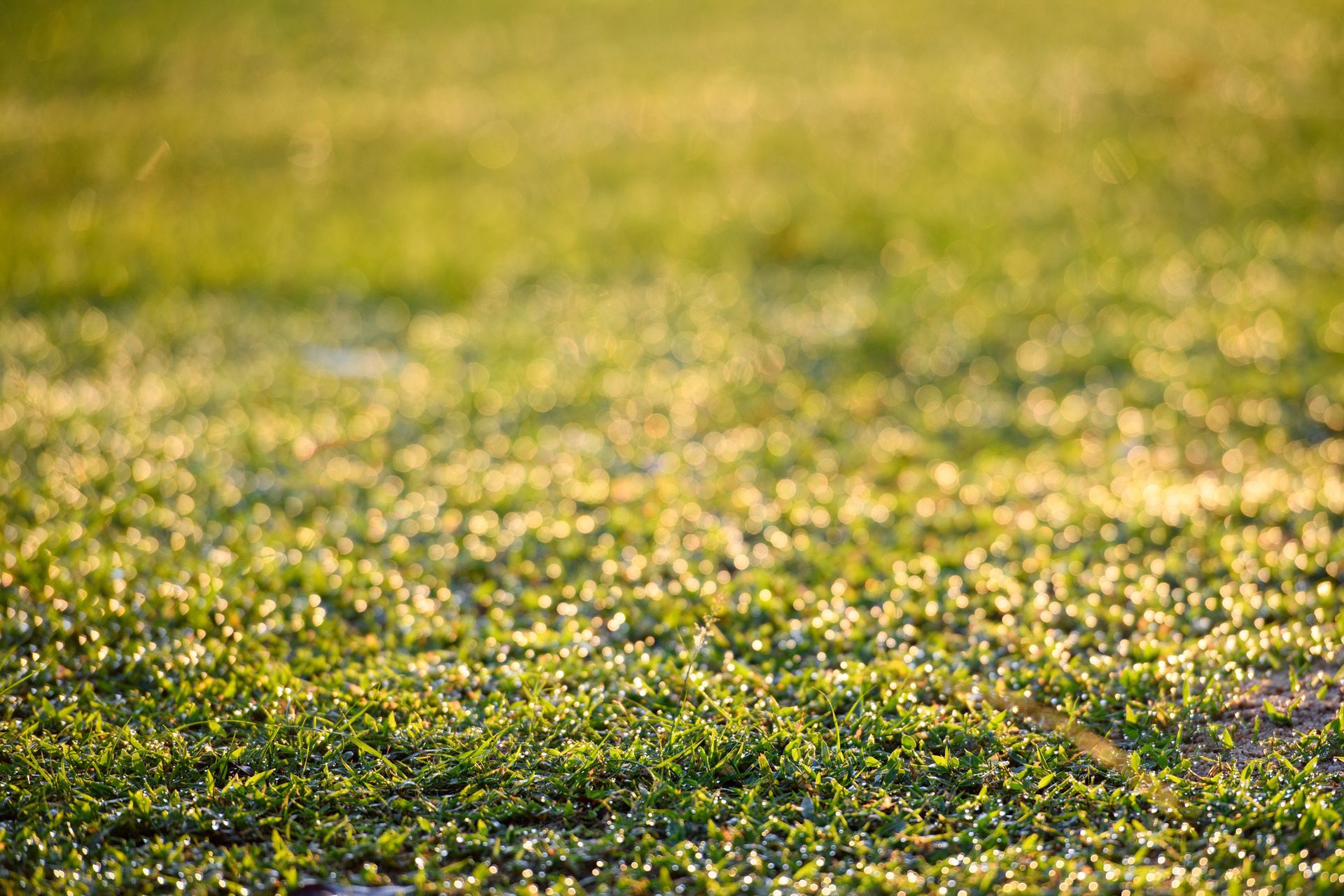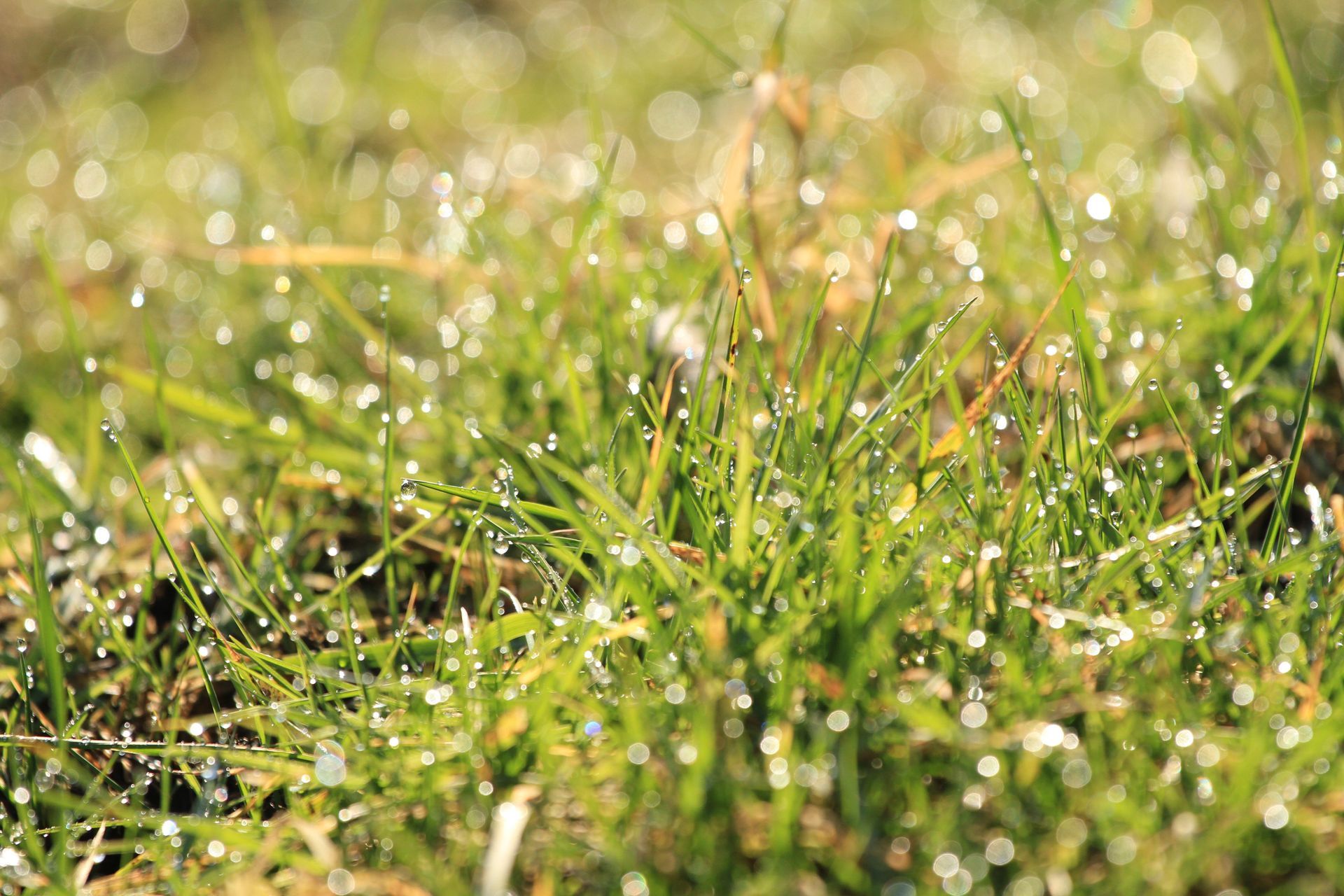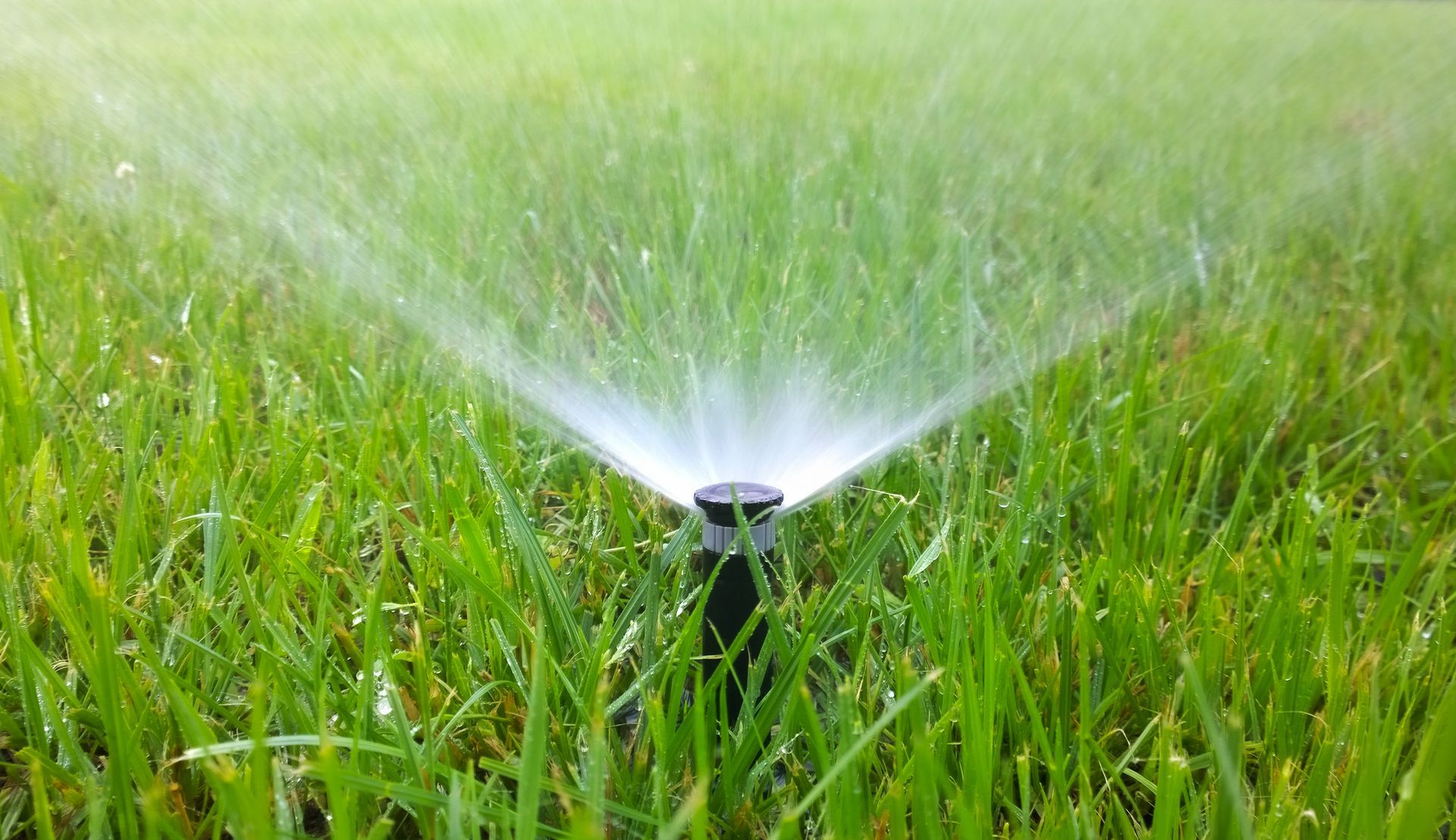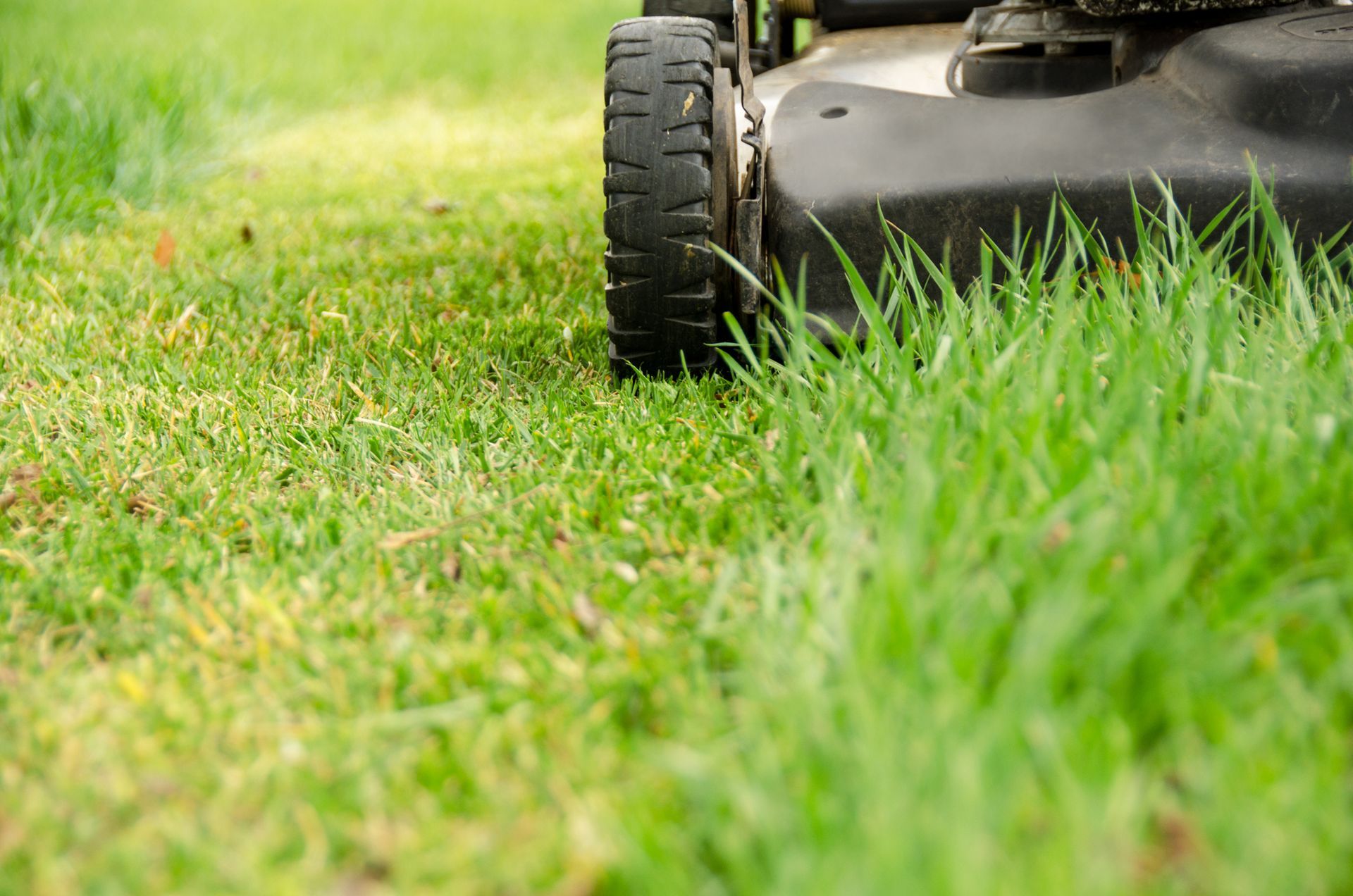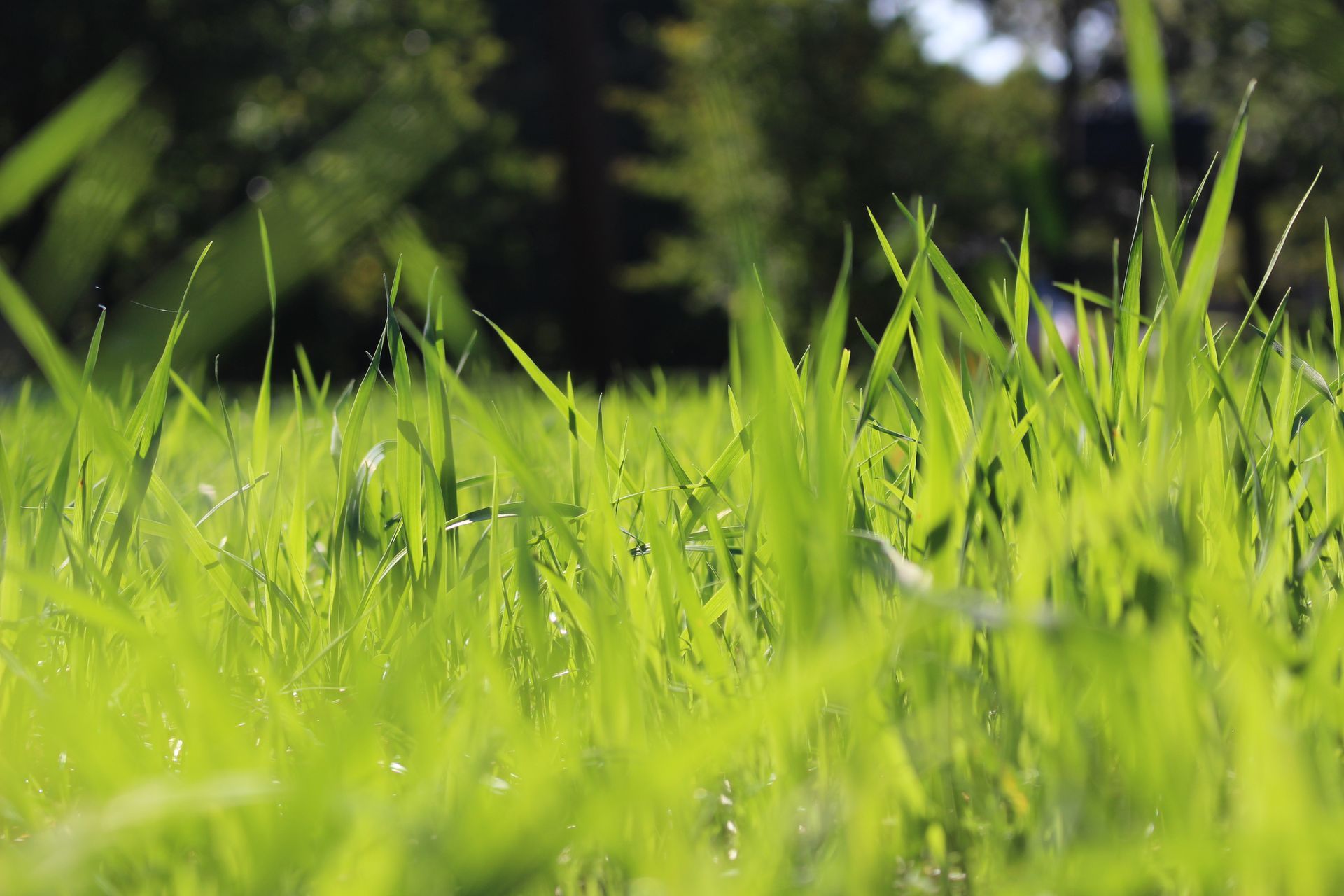The key to establishing new sod is to keep it properly watered for the first month. Immediately after installing sod, water thoroughly, until runoff. Depending on the terrain of your yard, and your soil type, you may have to water numerous times. The new sod should be kept thoroughly wet and not allowed to fully dry out. Depending on the time of year, temperature, and wind, the sod may need to be watered 3 to 5 times a day during the first 7 to 14 days. We have found that during the heat of the summer, 3 waterings will usually be enough provided the sprinklers are left on enough to soak through the soil of the sod and into the soil of the property. Lift a corner of the sod to ensure the water is getting through the turfs soil. In the first week, it is very important to keep the new sod damp. During this time, if your soil is soft, do not walk on it to keep from sinking in and leaving foot tracks. If allowed to dry out, the sod will shrink, brown, and can die. The roots of your new sod will penetrate the soil faster and root down sooner if properly watered. At the end of week 2, dry up the yard enough so you can mow.
Expert Care and Maintenance for a Year-Round Professional Lawn
At Chickasha Sod & Grass Farm, located in Chickasha, OK, we understand the importance of proper care and maintenance to keep your lawn looking lush and professional year-round. Whether you’re a homeowner or a contractor, our expert tips will help you maintain healthy, vibrant grass that stands the test of time. For personalized advice or to place your next sod order, call us today at 405-459-6232!
Essential Tips for Keeping Your Lawn Healthy and Beautiful
Weeks 1 & 2
Weeks 3 & 4
Rest of the Season
Mow if grass exceeds 3.5".
NORTHBIDGE BREMUDAGRASS MANAGEMENT
| MOWING | WATERING | FERTILIZER | INSECTS | DISEASE | |
|---|---|---|---|---|---|
| SPRING | Mow .5” −1.5” every 5−7 days or as needed; slightly higher in shade. | • Water thoroughly when needed. Apply when slight wilting is visible. | Lawnifi Spring Box | If you have experienced insect issues in the past, treat with a broadspectrum insecticide | Apply fungicide if needed. If you have had a fungus or disease in the past or have quite a bit of shade in the yard, you should apply a systemic fungicide to prevent future outbreaks. |
| SUMMER | Mow .5” −1.5” every 5−7 days or as needed; slightly higher in shade. | • 1” per week during summer months or drought for sandy loamy soils. Heavy soils require less. | Lawnifi Summer Box | If you have experienced insect issues in the past, treat with a broadspectrum insecticide | Apply fungicide if needed. If you have had a fungus or disease in the past or have quite a bit of shade in the yard, you should apply a systemic fungicide to prevent future outbreaks. |
| FALL | Mow .5” −1.5” every 10−14 days or as needed; leave in the higher range in the cooler months. | • Grass in shaded areas will require less water. | Lawnifi Fall Box | Treat with broadspectrum insecticide. If you use a granular variety, water the lawn immediately after application to help soil absorption. | Apply fungicide. This will help the grass enter colder months in healthier condition. If you have had fungus before, you may need multiple applications in affected areas. |
| WINTER | Mow .5” −1.5” every 10−14 days or as needed; leave in the higher range in the cooler months. | • Infrequent thorough watering promotes healthy grass. | Lawnifi Fall Box | Treat with broadspectrum insecticide. If you use a granular variety, water the lawn immediately after application to help soil absorption. | Apply fungicide. This will help the grass enter colder months in healthier condition. If you have had fungus before, you may need multiple applications in affected areas. |
U-3 Bermuda Grass Care
If installed during the growing season (spring, summer, or fall), follow general watering guidelines to ensure the new turf is established. Apply 13-13-13 before or after installation (before is better) in the amount of 10 lbs per 1,000 sq. ft.
During winter, water once after installation, then ensure the turf gets at least an inch a month throughout the winter months; increase the watering in March to give the turf water to start growing, especially if it has not rained.
After the sod is established, water with at least half an inch of water per watering two or three times in a week.
You can begin mowing your sod when it can no longer be pulled up. Keep your Bermuda turf at 2” of height or less. Less will encourage the grass to spread and get thicker, but try not to take off more than a third of the leaf blade on each cutting. The shorter you mow your Bermuda, the more often you will need to mow it.
Apply 5# per 1,000 sq. ft. of 46-0-0 or 34-0-0 fertilizer monthly from April through August if you can irrigate on a regular basis. Fertilize in the spring only if unable to water.
Fescue Sod Maintenance Tips
After Installation:
Follow general watering guidelines. Fertilize with 13-13-13 if it wasn’t done before installation to the amount of 10 lbs per 1,000 sq. ft.
After Fescue is Established:
Water 1 to 2 inches once or twice a week, depending on rains. Mornings are the best times to water.
Apply 5 lbs per 1,000 sq. ft. of 46-0-0 or 34-0-0 in the months of March, April, and May. During hot summer months, do not fertilize and mow sparingly. Remember this is a cool-season grass. During the months of September and October, repeat fertilization.
Mow at a height of 3” for best results. The roots will mimic the leaf on top, so mow at a height of 3” or more during the summer months to allow your roots to penetrate deeper into the soil.
If your fescue starts to thin out, mow it short, rake it lightly, and overseed in the fall.
Discover expert tips and tricks for maintaining healthy, vibrant grass year-round. Need personalized advice? Call Chickasha Sod & Grass Farm at
405-459-6232 today!
*PLEASE CALL AT LEAST 24 HOURS IN ADVANCE. WE CUT TO ORDER AND NEED TIME TO PREPARE FOR YOUR ARRIVAL.

